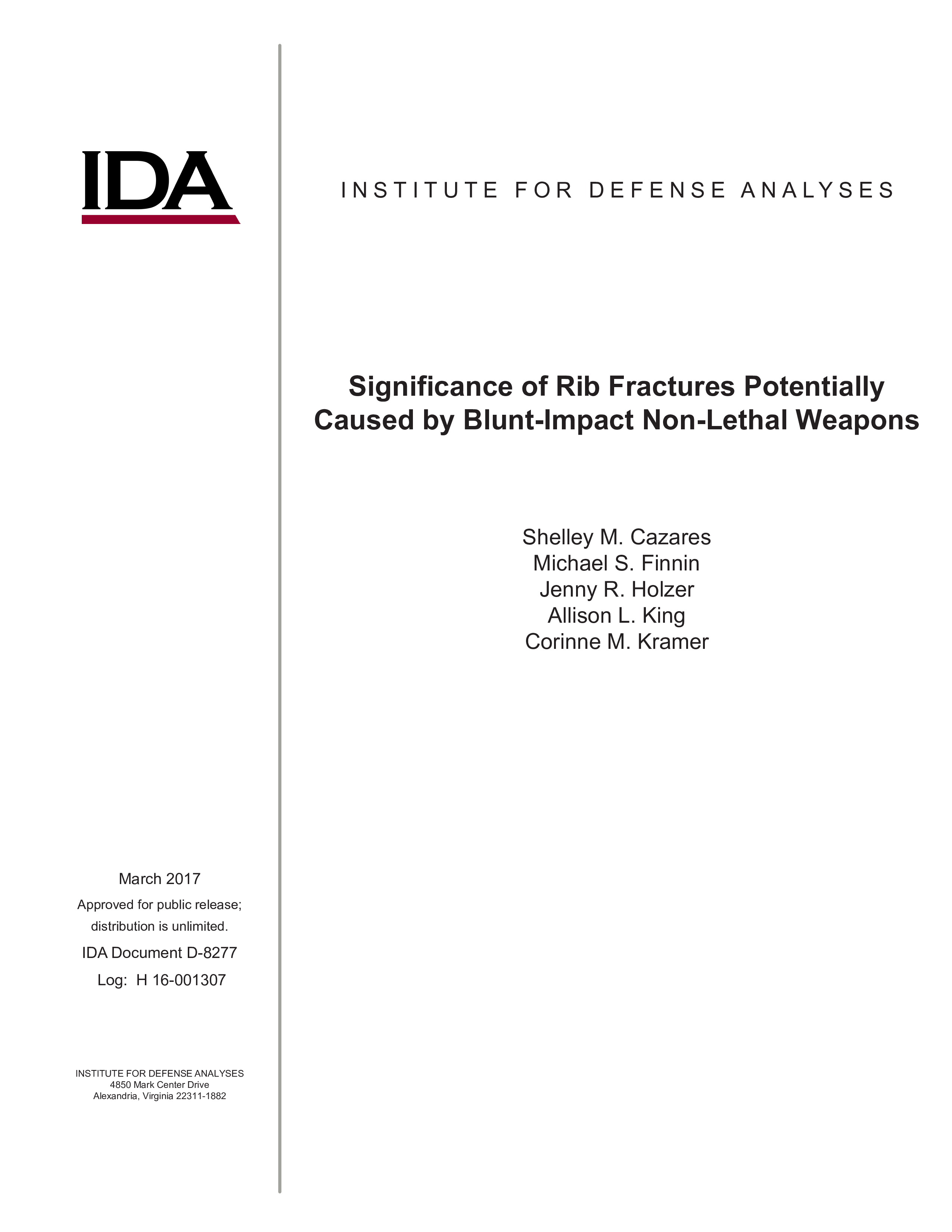Significance of Rib Fractures Potentially Caused by Blunt-Impact Non-Lethal Weapons
March, 2017
IDA document: D-8277
FFRDC: Systems and Analyses Center
Type: Documents
Division: Science and Technology Division,
Science, Systems and Sustainment Division
Authors:
IDA document: D-8277
FFRDC: Systems and Analyses Center
Type: Documents
Division: Science and Technology Division
Authors:
Authors
Shelley M. Cazares, Michael S. Finnin, Jenny R. Holzer, Allison L. King, Corinne M. Kramer
See more authors

